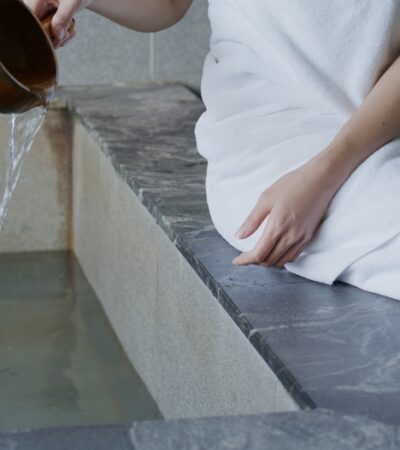If you are looking for new ways to keep fit whilst discovering new and exciting destinations in 2013, then scuba-diving may just be your answer. Donning a mask, fins and a tank is an eye-opening and exhilarating sport that can unlock a completely different world to the adventurous and curious traveller. Here, Daniela Marchesi – a trainee PADI Dive Master shares five of her top recommendations of where to experience the thrills of the deep:
1. Sipadan, Malaysian Borneo
A tiny oceanic island, Pulau Sipidan sits on top of a large sea mountain extending over 600m down to the ocean floor. The island itself is a true paradise covered in palm trees and fringed with white, deserted beaches. Just a stone’s throw from the sand, the pale waters over the sandy seabed change abruptly with a drop-off to the deep blue where the wall reef begins. Teeming with more seafans and black soft and hard corals than you could ever imagine, this vast wall reef plays host to fish of all colours of the rainbow. With its 12 dive sites, there is something for everyone though the highlights are without a doubt the abundance of green and hawksbill turtles. It’s not uncommon to spot up to 20 or more of these gentle reptiles during a dive and glide along at their pace. For an adrenaline rush, head to Barracuda Point, where the eponymous barracuda often gather in swirling, tornado-like formations.
When to visit: April through to October
2. Raja Ampat, Indonesia
A network of over 1,500 islands located on the border of New Guinea with distinctive green hilly mounds and flanked by piercing turquoise waters, Raja Ampat offers a glimpse of underwater nature that few people are even aware of. Home to 70 percent of the world’s coral and over 1,400 different species of fish Raja Ampat is the richest coral reef ecosystem in the world. Head to the northern region in the Dampier Strait for jaw-dropping encounters with large schools of barracuda and jacks circling in the blue and to Mansuar Island for the chance to get up, close and personal with large manta rays – sometimes even four or five at a time if you are lucky. Whilst keen photographers, should venture to the south region near Misool Island for a macro-heaven with both hard and soft coral, tons of nudibranches (colourful sea slugs), pea-sized frog-fish and pygmy sea horses.
When to visit: all-year round
3. Southern Africa
The Southern African coast line, flanked by the Indian Ocean, offers some of the world’s most exhilarating diving. Two hot spots include: Sodwana Bay, part of the St Lucia Wetland Park, the hard coral systems, accentuated by soft coral under the water’s surface, make Sodwana the scuba capital of South Africa. Here you’ll find sites offering caves and pinnacles just minutes from the shore plus walls, such as those at Antons’ dive state, that create a vortex in the current. Whilst north of the border and into Mozambique, head to Tofo – for dozens of the largest mantas you will ever see. The smooth-gliding gentle monsters, reaching six metres in width, regularly come here to visit what is affectionately known as a ‘cleaning station’. Families of whale sharks are often spotted towards the surface and, if lucky, make for a great diving or snorkelling companion.
When to visit: November to May
4. Maldives
A nation of islands – 1,200 to be precise, and then separated into 26 ancient coral atolls, the Maldives remain a true paradise for divers. The quintessential image etched in everyone’s mind when they think of this destination stands true – tiny islands shaded by gently waving coconut palms, fringed with sand of the palest gold, speckled with thatched wooden villas perched on stilts above the turquoise waters of the Indian Ocean. Resort tourism is now focussed on three atolls – North Malé, South Malé and Ari, and with lagoon waters as warm as bath water, superb house-reef diving with an abundance of reef sharks, turtles and schooling fish as well as the small colourful reef life, what is there not to love? For die-hard scuba divers, an even better way to explore the Maldive’s underwater world is to board a dedicated live-aboard boat for as many as four dives a day, with guaranteed sightings of the legendary giant manta rays as well as the chance to dive the wreck of the 35-000 tonne freight ship, Maldives Victory – which sank in 1981.
When to visit: November to April
5. Blue Hole, Belize
Like a giant pupil in a sea of turquoise, the Great Blue Hole is a sunken underwater cave located in the centre of The Lighthouse Reef, 45 miles off the coast of Belize. Ringed by fringing reef and approximately 400 metres in diameter, this Unesco World Heritage Site drops down to about 145 metres. The marine stalactites formations found at 40 metres are what lure divers from around the world – the sheer drama of swimming among them make it almost a religious experience. If you are lucky, expect to see hammerheads and bull sharks barrelling out of the blue depths on your ascent to the surface.
When to visit: all year-round
THE WELL-BEING BENEFITS
As well as being a relaxing activity, scuba diving also provides a full body workout that combines cardio and strength training to burn calories, tone muscles and improve breathing.
Eats calories
It’s not uncommon for a diver to burn up to 600 calories during a dive, which on average can last between 45 and 50 minutes.
Firms the thighs
Swimming with fins firms up both the thighs and bottom, with the strokes powered by both the quadriceps and hamstrings.
Strengthens muscles
Lifting heavy equipment and getting on and off boats in full scuba gear builds strong upper-back muscles and improves core strength.
Improves lung capacity
Being able to maintain buoyancy underwater requires divers to have larger lungs and an increased vital capacity (the volume of air you can exhale after a maximal inhalation).
Daniela Marchesi is a PADI trainee Dive Master, PR consultant & copywriter. Check out her blog www.danielamarchesi.tumblr.com
Image: www.vogue.com
words by Daniela Marchesi













